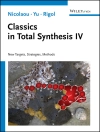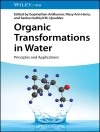Regulation of intracellular p H is vital to all living cells. This symposium covers the control of p H in muscle and nerve cells and the different mechanisms of acid transport across epithelial and other cell membranes. Papers describe the development and application of microelectrodes and various techniques in molecular biology to the study of the mechanisms of protein transport. Also discusses the significance of p H regulation for the action of hormones and growth factors.
Tabla de materias
Partial table of contents:
Movement of Acid Equivalents across the Mammalian Smooth Muscle
Cell Membrane (C. Aickin).
Regulation of Intracellular p H in Cardiac Muscle (R.
Vaughan-Jones).
Role of Monocarboxylate Transport in the Regulation of
Intracellular p H or Renal Proximal Tubule Cells (W. Boron, et
al.).
Epithelial p H and Ion Transport Regulation by Proton Pumps and
Exchangers (B. Harvey & J. Ehrenfeld).
Proton Channels in Snail Neurons Studied with Surface p H Glass
Microelectrodes (R. Thomas).
Proton-Induced Transformation in Gating and Selectivity of the
Calcium Channel in Neurons (M. Morad).
Extracellular p H and Stimulated Neurons (E. Sykova, et
al.).
Structural Properties of the Clathrin-Coated Vesicle Proton
Translocating Complex (D. Stone, et al.).
Summary.
Indices.
Sobre el autor
The Novartis Foundation is an international scientific and educational charity which promotes the study and general knowledge of science and in particular encourages international co-operation in scientific research.












